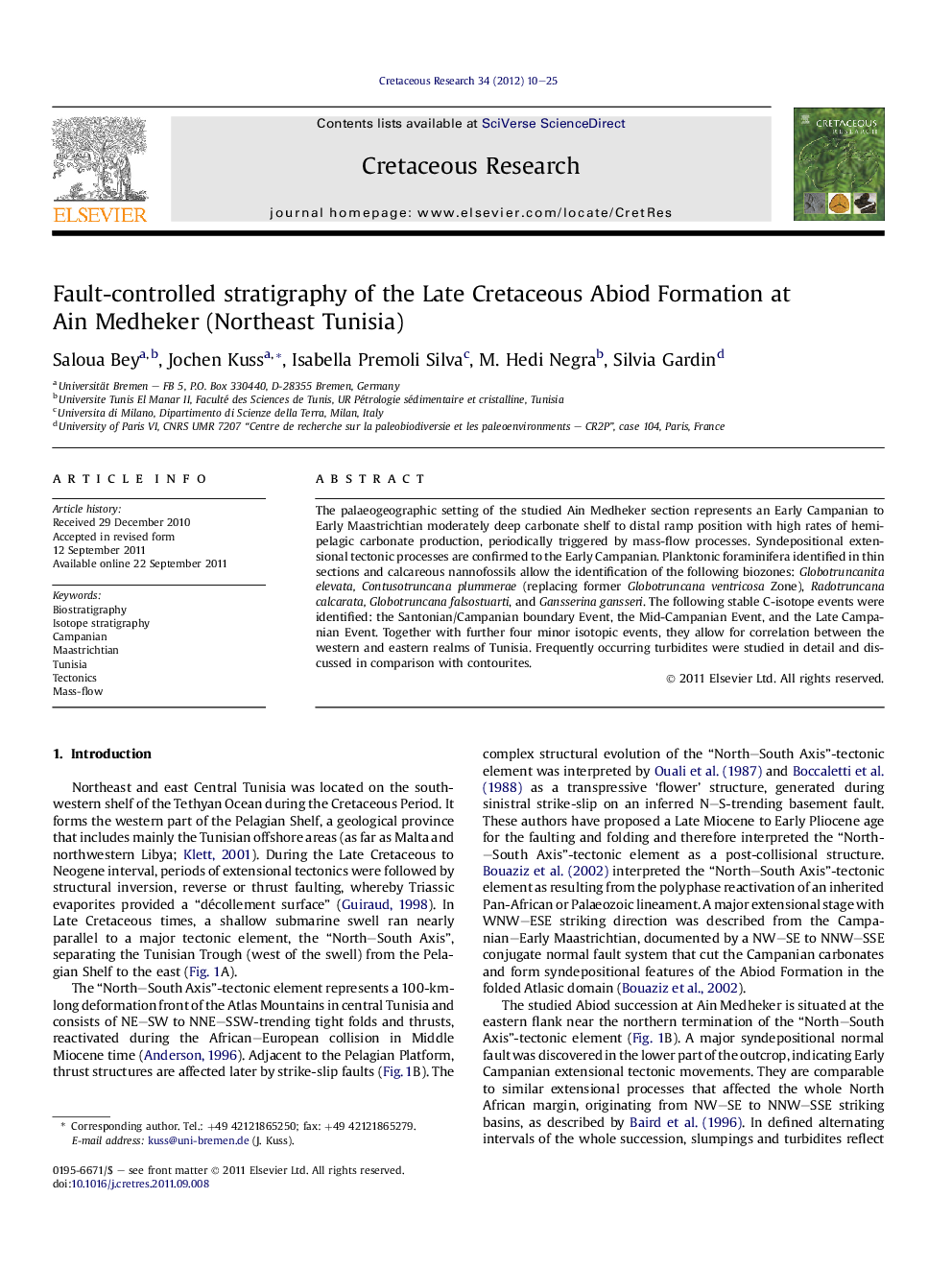| Article ID | Journal | Published Year | Pages | File Type |
|---|---|---|---|---|
| 4747360 | Cretaceous Research | 2012 | 16 Pages |
The palaeogeographic setting of the studied Ain Medheker section represents an Early Campanian to Early Maastrichtian moderately deep carbonate shelf to distal ramp position with high rates of hemipelagic carbonate production, periodically triggered by mass-flow processes. Syndepositional extensional tectonic processes are confirmed to the Early Campanian. Planktonic foraminifera identified in thin sections and calcareous nannofossils allow the identification of the following biozones: Globotruncanita elevata, Contusotruncana plummerae (replacing former Globotruncana ventricosa Zone), Radotruncana calcarata, Globotruncana falsostuarti, and Gansserina gansseri. The following stable C-isotope events were identified: the Santonian/Campanian boundary Event, the Mid-Campanian Event, and the Late Campanian Event. Together with further four minor isotopic events, they allow for correlation between the western and eastern realms of Tunisia. Frequently occurring turbidites were studied in detail and discussed in comparison with contourites.
► We describe the macro- and microfacies of a carbonate-dominated Campanian–Early Maastrichtian succession from Tunisia. ► The deposition of the mainly hemipelagic strata shows imprints of slumpings, calciturbidites, and contourites. ► We applied an integrated stratigraphy (planktonic foraminifera, calcareous nannofossils, carbon isotopes). ► Syndepositional extensional tectonic processes controlled the Early Campanian succession only.
